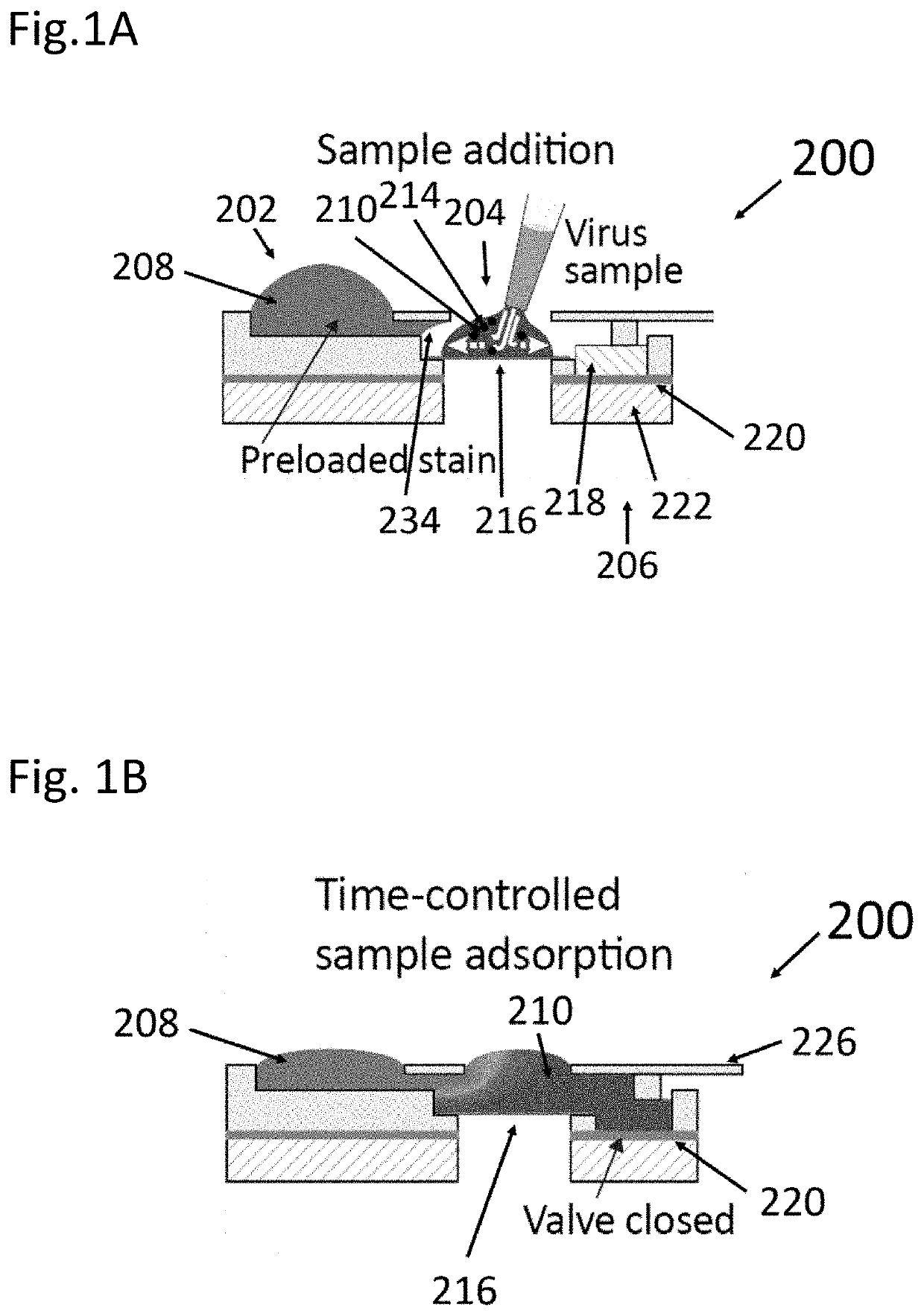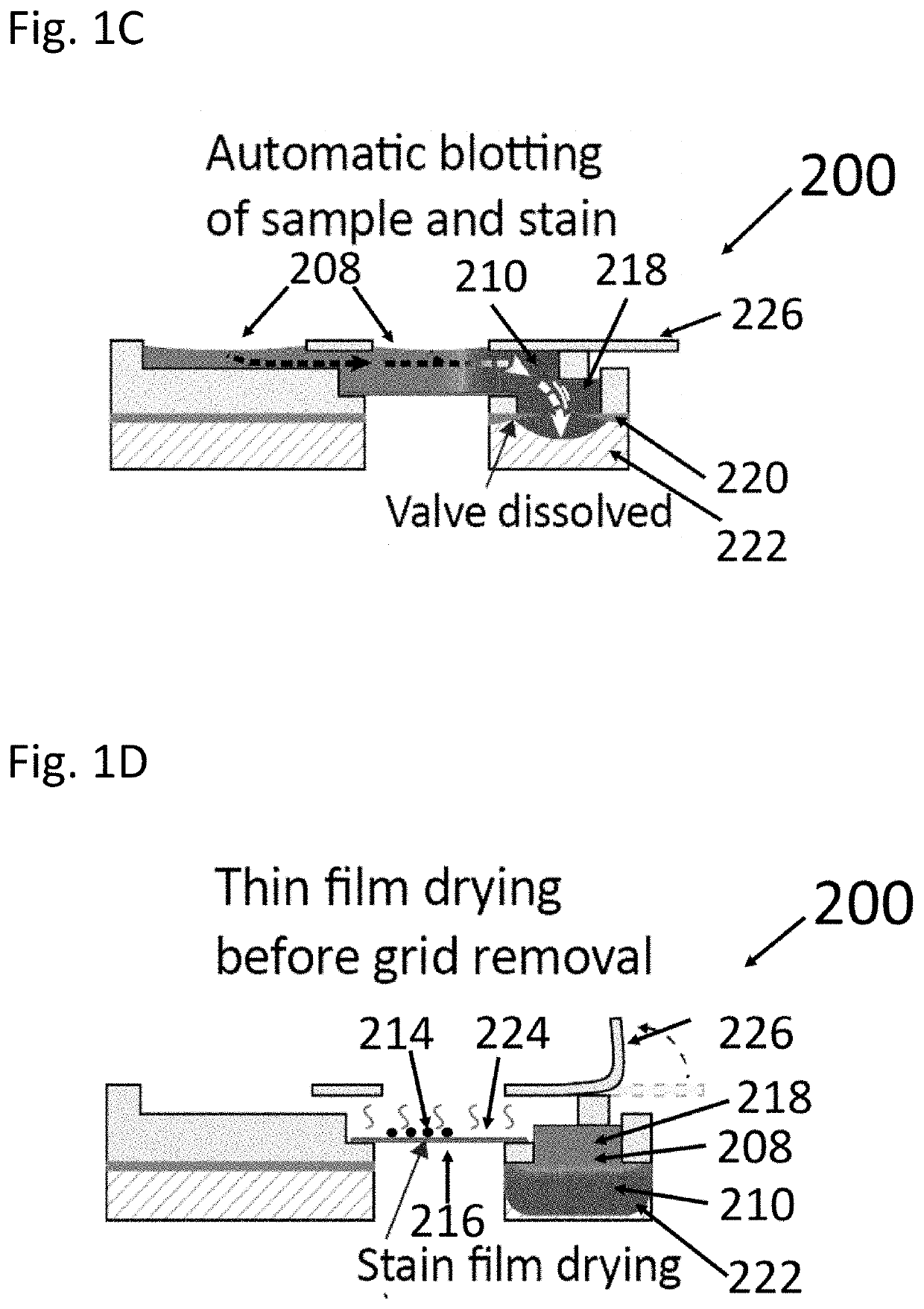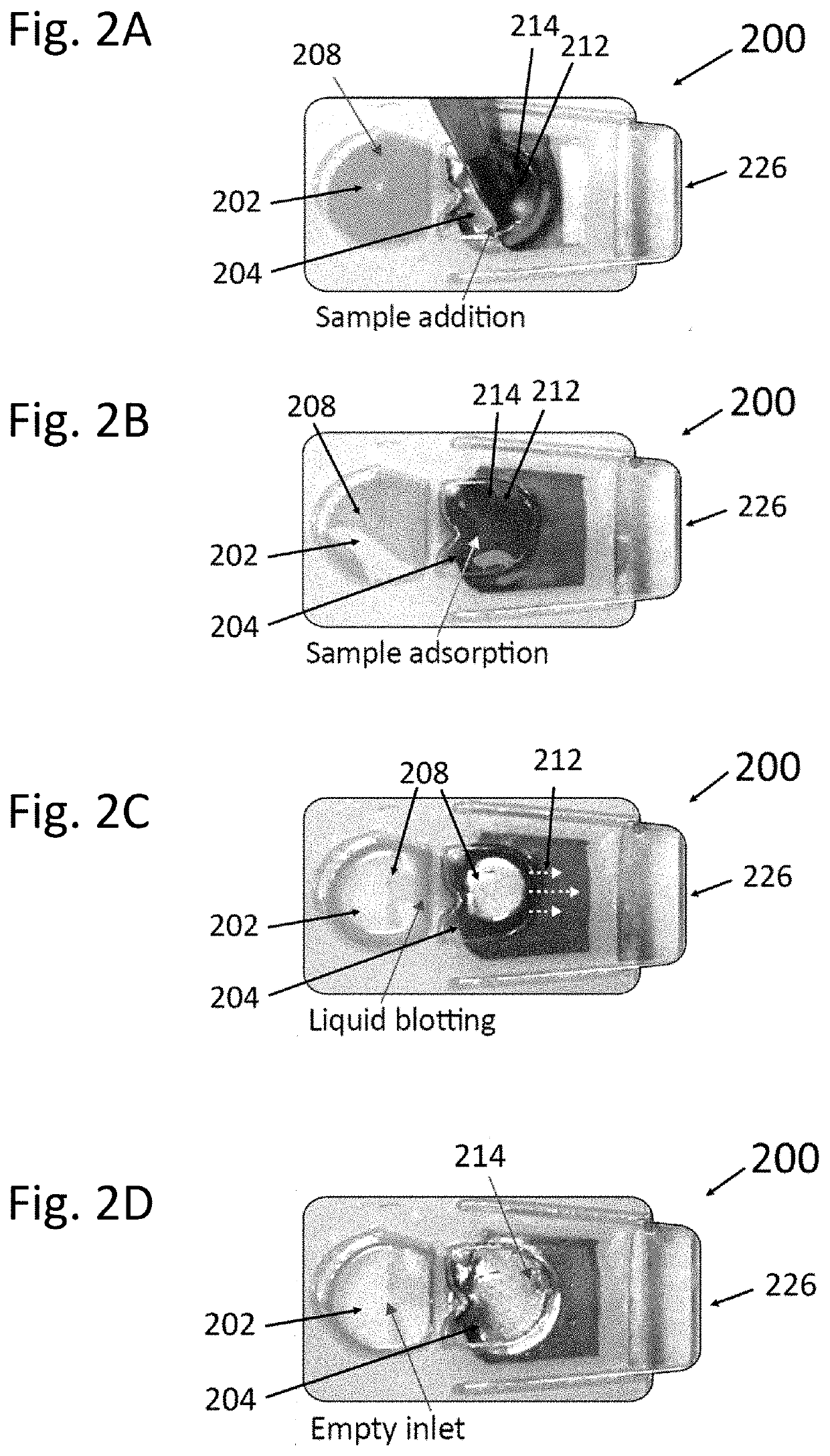Autonomous microfluidic device for sample preparation
- Summary
- Abstract
- Description
- Claims
- Application Information
AI Technical Summary
Benefits of technology
Problems solved by technology
Method used
Image
Examples
Embodiment Construction
[0092]A capillary-driven microfluidic device of the present invention is presented herein for sample preparation that requires the same small liquid volumes as the conventional manual procedure does, and which requires minimal user-interaction. More particularly, the sample support is preferably a grid, such as a TEM grid. The user merely initiates the autonomous sample preparation process, waits for about one minute and then extracts the TEM grid that is ready for imaging in a TEM or SEM microscope. The autonomous process of the present invention typically requires a film, that is soluble by the sample liquid, such as a PVA (polyvinyl alcohol) film for a water-based sample liquid, that automatically controls the time for sample adsorption and draining of excess liquids. Microfluidic consistency for five microfluidic devices is demonstrated below by comparing the timing and duration of the microfluidic TEM grid preparation events. Furthermore, the adjustability of the time-delay is ...
PUM
 Login to View More
Login to View More Abstract
Description
Claims
Application Information
 Login to View More
Login to View More - R&D
- Intellectual Property
- Life Sciences
- Materials
- Tech Scout
- Unparalleled Data Quality
- Higher Quality Content
- 60% Fewer Hallucinations
Browse by: Latest US Patents, China's latest patents, Technical Efficacy Thesaurus, Application Domain, Technology Topic, Popular Technical Reports.
© 2025 PatSnap. All rights reserved.Legal|Privacy policy|Modern Slavery Act Transparency Statement|Sitemap|About US| Contact US: help@patsnap.com



